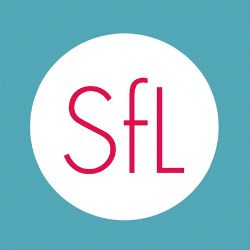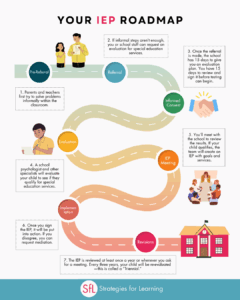No products in the cart.

IEPs (Individualized Education Programs) and 504 Plans are both designed to support students with disabilities, but they function very differently. Understanding the difference between an IEP vs. 504 is crucial for making informed decisions about your child’s educational support and ensuring their needs are met in the school environment. This article will explain the purpose of each, highlight the key differences, and outline the processes for determining eligibility.
What is an IEP?
An IEP (Individualized Education Program) is a formal, legally binding document that outlines the special education services and supports that a school will provide to meet the needs of a student with a disability. IEPs are covered under the Individuals with Disabilities Education Act (IDEA), a federal law that ensures students with disabilities receive a free and appropriate public education (FAPE). The purpose of the IEP is to ensure that the student is able to access academic programs and make progress in the school environment. The IEP document includes several key components:
- Present levels: this outlines how a student is currently performing in school
- Assessment data: evaluation results that help identify students’ strengths and challenges
- Goals: Specific, measurable, and tailored to the student’s areas of need
- Supports and services: Special education services, accommodations, and/or modifications needed to help the student make progress
The IEP document is developed collaboratively by the IEP team which often includes the student (if appropriate), parents, a special education and general education teacher, a school psychologist, and a district representative. The team gathers at minimum annually to review a student’s progress as well as every three years to re-evaluate the student and determine continued eligibility for special education services. Here are some tips to prepare for the IEP Meeting.
To be eligible for an IEP a student must meet the requirement for one or more of the 13 disability categories listed in IDEA. The disability must have a negative impact on a student making progress in the school setting. Additionally, the student must require specialized instruction in order to make progress in the general education setting.
What is a 504 Plan?
A 504 is also a formal plan that outlines how a school will ensure a student with a disability can access the general education setting. Unlike an IEP, which focuses on specialized instruction, a 504 Plan is primarily concerned with providing accommodations that help the student make progress in the general education environment. 504 Plans are governed by Section 504 of the Rehabilitation Act of 1973, a federal civil rights law that protects against discrimination. While the focus of a 504 Plan is on eliminating barriers to learning, it does not involve specially designed instruction like an IEP does. A 504 plan typically includes the following components:
- Accommodations: changes to the student’s learning environment to ensure they have access (e.g. extended time on tests, preferential seating) See a comprehensive list of accommodations.
- Assistive technology: Tools to support learning (e.g. text to speech, audiobooks)
- Designated School Individual: Staff member responsible for ensuring the plan is implemented
504 Plans are created collaboratively and typically include a student’s parent or caregiver, general and special education teacher and the school principal. However, unlike an IEP the rules are less specific for who is required to attend 504 meetings. 504 Plans are typically reviewed annually and to be eligible for a 504 plan a student must have a disability that impacts one or more major life activities such as reading, concentrating, or paying attention. In some cases, students who don’t qualify for an IEP might be eligible for a 504 plan if they have a disability that impacts their ability to participate fully in the educational environment.
How Do You Know Which is Right for Your Child?
Now that you have a clearer understanding of IEP vs. 504, how do you decide which option is right for your child? First, consider whether your child’s disability significantly impacts their ability to learn and access education. Do they require specialized instruction? If the answer is yes, your child may be eligible for an IEP (Individualized Education Program).
However, if your child’s disability does not require specialized instruction but need accommodations to participate in the general education classroom, a 504 Plan might be the better fit. To explore the best option for your child, reach out to your school team and request a meeting to discuss the next steps. SFL clinicians are also equipped to support you in this process! You can reach out to your child’s clinician to help you review your IEP/504 documents or even attend meetings to advocate for your child and help develop educational programs. Reaching out to your child’s clinician to help you read through your IEP/504 documents or even attend a meeting to help advocate and develop education programs is an option. By understanding these processes, you can take an active role in supporting your child’s academic journey. Remember, SFL is here to assist you every step of the way. Schedule a free consultation today and check out Frequently Asked Questions about the IEP.
Written by Joi Ward, M.Ed., MA Special Education







No comment yet, add your voice below!